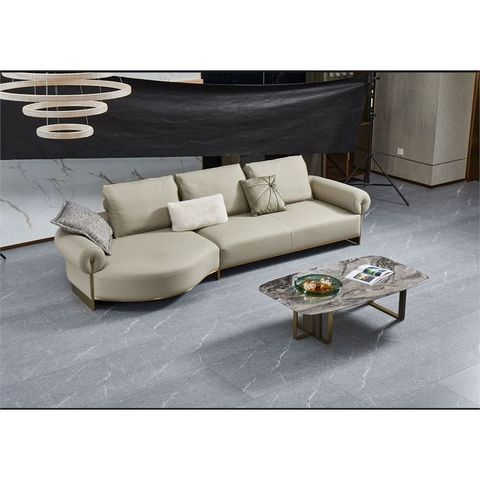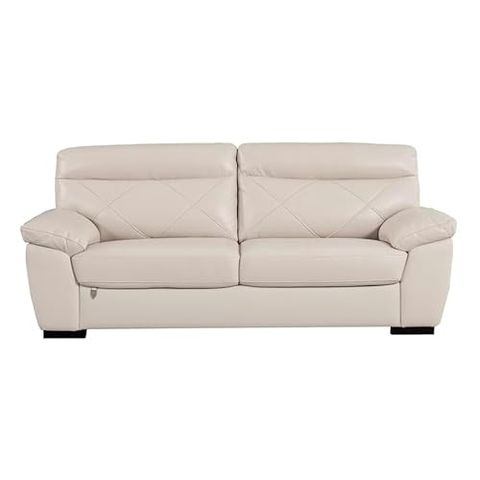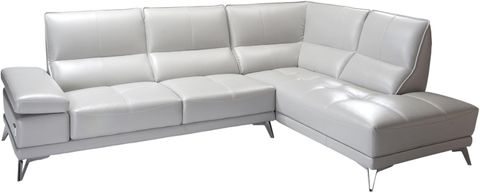Everyday use doesn’t have to mean everyday damage. With the right approach, your genuine leather furniture can remain beautiful for decades. It’s not just about avoiding spills or scratches – it’s about understanding how leather breathes, reacts, and responds to care.
Picture this: You’ve finally found that perfect armchair, the one with the rich, supple leather that feels like velvet against your skin. It’s been a long search, and now it sits in your living room, becoming part of your daily routine. But then comes the reality check – how do you keep it looking pristine when kids run around, pets curl up for naps, and coffee spills happen? This isn’t just about preventing damage; it’s about embracing the journey of caring for something that will age gracefully with you. Genuine leather furniture deserves more than just casual attention. It needs thoughtful maintenance that respects its natural properties while keeping it functional and beautiful for years to come.
Understanding Your Leather’s Nature
Genuine leather is a living material. It’s not like synthetic alternatives that can handle abuse with minimal consequences. Every piece of leather has its own personality, shaped by the animal hide it came from. Some leathers are naturally more supple, others more durable. The key insight many people miss is that leather needs to breathe. When you apply too much conditioner or oil, you’re essentially smothering it. Think of it like a person wearing too many layers in warm weather – they’ll get uncomfortable quickly. That’s exactly what happens when you overload leather with products. A good rule of thumb is to observe how your leather reacts. If it starts feeling sticky or tacky after applying something, you’ve probably gone too far. Real leather will feel smooth and slightly supple to the touch, but never greasy. The grain should be visible and the texture should be consistent across the surface. Understanding these characteristics helps you recognize when something is wrong before it becomes a major issue.
Daily Habits That Preserve Leather Beauty
Simple routines make a huge difference in maintaining your leather furniture. Dust it regularly with a soft cloth, preferably one made of microfiber or cotton. This prevents dirt and debris from getting embedded in the grain. Wipe down surfaces gently, using light pressure and a circular motion. Never use harsh chemicals or abrasive cleaners, even if they seem effective. They can strip away the natural oils that keep leather soft. A mild soap solution mixed with water works wonders for removing everyday grime. Just remember to dry thoroughly afterward. Another crucial habit is rotating cushions and pillows periodically. This ensures even wear and prevents one area from becoming overly worn. If you have pets, consider placing protective covers over leather furniture during nap times. It’s not about being paranoid – it’s about extending the life of something you genuinely love. You might think you’re being overly cautious, but leather furniture often costs hundreds or thousands of dollars, making this investment in protection worthwhile. Even small actions like avoiding direct sunlight exposure and keeping the furniture away from heat sources can prevent fading and cracking.
Dealing with Common Accidents and Stains
Spills happen, and that’s perfectly normal. The key is knowing how to respond quickly and correctly. For liquid spills, blot immediately with a clean cloth. Don’t rub! Rubbing can push the liquid deeper into the leather fibers. For wine stains, sprinkle salt immediately to absorb the liquid. Then use a damp cloth to gently remove any residue. Coffee stains require a different approach – use a slightly damp cloth with mild soap, working from the outside toward the center. Always test any cleaning method on an inconspicuous area first. This is especially important with colored leather furniture. Leather can fade differently depending on its dyeing process. For stubborn stains, professional cleaning may be necessary, but most minor issues can be handled at home. Remember that leather’s natural oils can help repel some stains, so don’t panic if something gets on your furniture. The main thing is to act quickly and follow proper cleaning procedures. Don’t wait until tomorrow to address a spill – the longer something sits, the harder it becomes to remove completely. Also, avoid using household cleaners that contain ammonia or bleach, as these can damage the leather’s finish.
Seasonal Maintenance Strategies
Just like your home, leather furniture responds to seasonal changes. During winter months, indoor heating can make leather very dry. This is when you’ll notice the material starting to crack or feel stiff. Adding moisture back through appropriate conditioning is essential. In summer, high humidity levels can cause leather to swell or develop mold. The key is to maintain a stable environment. Keep your furniture away from direct heat sources and ensure good air circulation. Consider using a humidifier during dry seasons to maintain optimal moisture levels. During spring and fall, perform thorough cleaning sessions. Remove all cushions and wipe down every surface carefully. Check for any signs of wear or damage that might have developed over time. Professional conditioning every 6-12 months is ideal for maintaining leather’s suppleness and appearance. These treatments help restore the natural oils that are lost through daily use and environmental factors. Pay special attention to areas that receive frequent use – the armrests, seat areas, and backrests. These spots tend to show wear more prominently and need extra care.
Professional vs. DIY Care Options
There’s a lot of debate about whether to hire professionals or handle leather care yourself. Both approaches have their merits. DIY methods work well for basic maintenance and routine cleaning. Most people can successfully maintain their leather furniture with regular dusting, gentle cleaning, and periodic conditioning. However, serious damage or deep stains often require professional intervention. Professionals have specialized equipment and products that aren’t available to the general public. They understand how different types of leather react to various treatments and can provide tailored solutions. For example, a professional can determine whether your leather needs a full restoration or just a light conditioning treatment. They also know how to handle delicate repairs without causing further damage. The cost of professional services varies widely based on the extent of work needed. Sometimes it’s worth paying for a single deep clean rather than dealing with progressive deterioration. Many people find that combining both approaches works best – doing basic maintenance themselves and bringing in professionals for major treatments or when they notice unusual changes in their furniture’s condition.
Signs That Your Leather Needs Attention
Recognizing when your leather needs care is half the battle. Look for several telltale signs. Cracking along the grain lines is one of the most obvious indicators. This usually happens when leather has become too dry or has been exposed to excessive heat. Fading or discoloration can occur due to prolonged sun exposure or improper cleaning products. If your leather feels rough or sticky instead of smooth and supple, it’s time to take action. Unusual odors or the presence of mold are serious warning signs that indicate deeper problems. Changes in texture, such as areas that feel significantly harder or softer than others, suggest uneven wear or damage. When you notice these symptoms, don’t ignore them. Early intervention typically means simpler fixes and less expensive solutions. Regular inspection helps catch problems before they escalate. A quick visual check once a month can reveal subtle changes that might otherwise go unnoticed. Consider keeping a small notebook to document any changes you observe. This makes it easier to track patterns and identify when something requires professional attention.
Taking care of genuine leather furniture is more than just a chore – it’s an investment in your home’s character and longevity. The techniques we’ve discussed aren’t meant to be intimidating or overly complicated. They’re practical approaches that anyone can implement with a little attention and consistency. Remember, leather furniture is designed to age beautifully, not to look brand new forever. The goal is to preserve its quality and extend its lifespan while appreciating its natural evolution. Whether you choose to handle most maintenance yourself or occasionally bring in professionals, the key is staying proactive rather than reactive. Don’t wait for problems to appear before taking action. Regular care prevents most issues from developing in the first place. Your leather furniture deserves this kind of attention because it’s more than just furniture – it’s a piece of art that will be part of your daily life for years to come. By following these guidelines, you’re ensuring that your investment continues to bring joy and comfort for generations.














